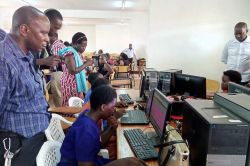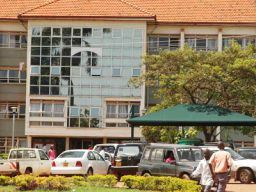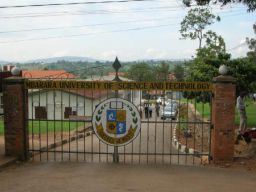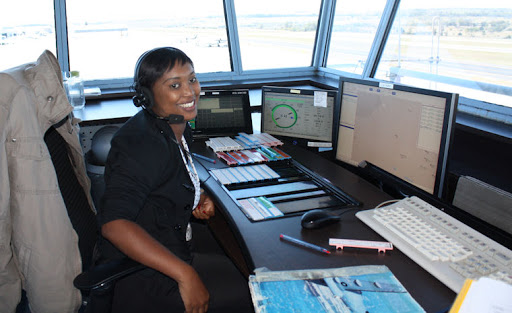Air Traffic Control (ATC) is a service provided by ground- based professionals (Air Traffic Controllers) who direct aircraft on ground and through the airspace by giving clearances, instructions, and advice to pilots warning them of the different dangers and obstructions both in the airspace, and on ground. The major objective of ATC is to ensure safety through preventing collisions of aircraft and to ensure an orderly and expeditious operation of flights. Essentially it involves monitoring and directing movement of aircraft on the ground and in the air.
Air Traffic Controllers
Air Traffic Controllers (ATCOs), also called Air Traffic Management Officers (ATMOs) are professionals who monitor the location of aircrafts in their assigned airspace by radar and communication with pilots by radio about position reports, Headings, altitudes or flight levels maintained and movement on ground to prevent collisions all achieved through CNS (Communication, Navigation and Surveillance).

Tonny Ssenkubuge, the president – Uganda Air Traffic Controllers’ Association
There are five ratings for Air Traffic Controllers;
1. Aerodrome Control
2. Approach Control (Procedural)
3. Approach Control (Radar/Surveillance)
4. Area/Airways Control (Procedural)
5. Area Airways Control (Radar/ Surveillance)
These can be attained progressively over time and for each rating, an ATCO undergoes training in School for a determined period, then undergoes On-the-job training, and sits for an exam upon whose successful completion, the rating is endorsed in their license.
Entry Requirements
You must have done a science combination at A-level, with Mathematics, and either Physics or Geography.
Some institutions, in addition require a university degree in science-based courses, such as; Bsc Physics, Maths, Bsc Education, BSTAT, Computer science, Engineering, IT etc or At least a Private Pilot License (PPL) holder.
Training Institutions.
There are several Aviation academies worldwide which offer ATC.
In Uganda ATC course is offered at Moriah Aviation Training Centre located in Nkumba – Entebbe.
Other institutions in East-Africa include; The East African school of Aviation (EASA) Nairobi, Civil Aviation Training centre (CATC) Dar es salaam.

Some Female Air Traffic Controllers on duty.
Opportunities
Statistics worldwide and future projections indicate a general shortage of Aviation professionals especially Air Traffic Controllers and pilots. This means that there is a great future waiting for prospective aviation professionals. (Source Next generation aviation professionals program – NGAP)
Related fields.
Aeronautical Information management, Communication Navigation surveillance Engineers, Flight operations, Air Traffic Management inspectors, Aeronautical information inspectors, Aerodrome Inspectors, Pilots, Unmanned Aircraft/Drone operations etc.
Complied By Mr Tonny Ssenkubuge, The president – Uganda Air Traffic Controllers’ Association































